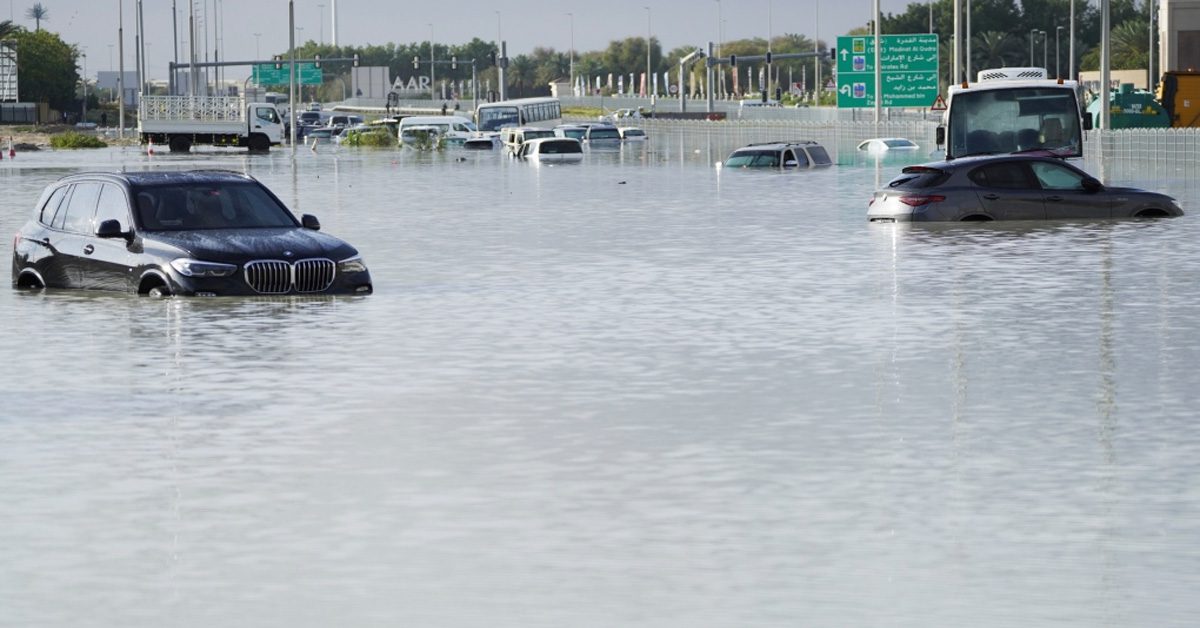The UAE’s meteorology service has confirmed that no cloud seeding operations occurred during Tuesday’s severe downpour.
A spokesperson from the National Centre of Meteorology confirmed to The National on Wednesday that their seeding planes had not approached the storm, which caused waves of torrential rain to inundate parts of the country.
Many individuals speculated on social media that the downpour was caused by the country’s cloud seeding operation, which aims to coax more rain from clouds.
“The NCM did not conduct any seeding operations during this event,” the statement read.
“One of the primary ideas of cloud seeding is to target clouds in their early stages, before they rain. If you are experiencing heavy thunderstorms, it is too late to do any seeding operations.
“We take the safety of our employees, pilots, and aircraft seriously. “NCM does not conduct cloud seeding operations during extreme weather events.”
Some reports on Tuesday attributed statements to an NCM forecaster, claiming seeding had occurred.
However, the bureau stated that planes had been in the air in the days leading up to the storm, but they had merely “taken samples” and not seeded clouds.
The NCM monitors the seeding project and has previously indicated that using seeding planes during severe weather is too unsafe.
It has been previously said that during periods of unsettled weather, when seeding occurs, the practice does not result in thunderstorms.
“Some blame us for storms. “We are not responsible for this,” an NCM forecaster earlier told The National.
“Aircraft do not go inside storm clouds if they are strong or dangerous,” the forecaster stated. “All we do is try to strengthen some clouds.”
Meanwhile, the NCM issued a warning over the weekend that unstable circumstances would remain until Wednesday. It had forecast that the brunt of the weather will arrive on Monday and Tuesday.
A forecaster told The National on Wednesday that the country’s heavy rains were caused by a warm and humid air mass from the Arabian Sea colliding with a cold air mass from the northwest.
“This creates instability,” the forecaster stated. “And this caused towering convective clouds over the UAE starting in the west and moving gradually to Abu Dhabi, Al Ain and then north.”
The rains fell in waves across the nation, culminating in a heavy downpour on Tuesday that caused havoc in areas of the UAE, flooding houses, sinking cars, stranding citizens, and delaying flights.
According to official calculations, the country has received more rain since Sunday than it would anticipate in many decades.
The last of the rain fell on Wednesday, although the system has since moved east.
“The country is set to experience more stable weather from tonight,” the forecaster stated.
“It was a really powerful episode. I hadn’t seen this kind of thing in a long time.”
The UAE’s cloud-seeding effort began in the 1990s and is headquartered in Al Ain.
When specialists identify a suitable cloud, a small plane is deployed from Al Ain to “seed” it, usually with salt flares that naturally attract water.
The goal is to enhance rain, not manufacture it. It is difficult to determine exactly how much rain falls as a result of the procedure.
The NCM, which oversees the operation, has stated that additional study is required to assess the real impact.

